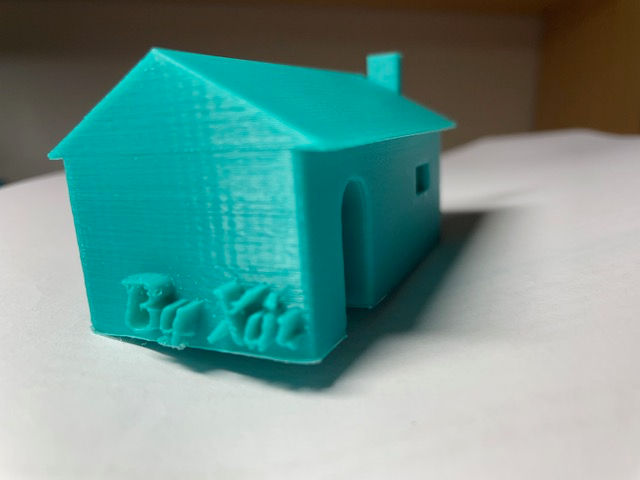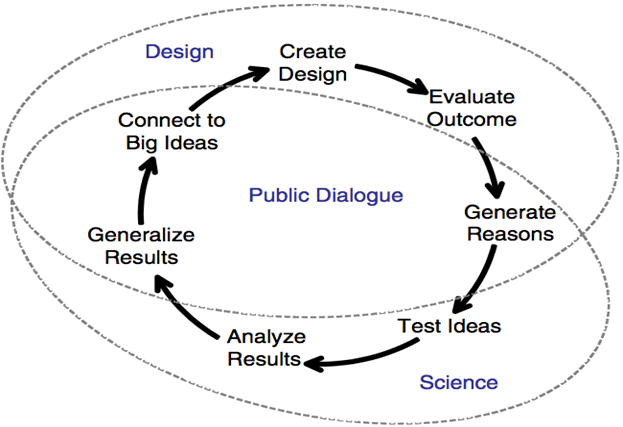Week3: Design Thinking
- xinli69
- Mar 12, 2023
- 2 min read
Updated: Mar 14, 2023
The traditional interpretation of creativity involves creating something new that has practical value, which is demonstrated by its successful integration into society. (Lewis, 2011). Teachers keep looking for more activities to promote their students’ innovation abilities.

Original by author
However, it is an important element to consider the influence of the creative idea. That is because innovation has become known as the currency of modern industry because of its crucial role in the success of companies, industries, products, systems, and services, and the fact that it is often evaluated based on its economic impact. (Stokes, 2014).
Therefore, design thinking is critical for all creative work. As (Wright, & Jones, 2018) mentioned in an implemented innovation curriculum in a public K-6 school. The first day just understanding that innovation involves implementing creative ideas into society in a way that demonstrates an understanding of the people, systems, and services that already exist. This understanding can be achieved through various means, such as observing how people interact with everyday activities, gaining empathy by experiencing the issues that others face, asking questions to deepen comprehension and knowledge, and networking to gain different perspectives and draw upon each other's strengths. By employing these techniques, people can identify valuable information and gain a deeper understanding of the many facets of a problem that might not be apparent through observation or personal experience alone. We might refer to the below schematic when teachers plan a creativity lesson.

Apedoe et al, 2008
Additionally, here is a toolkit that can be employed by teachers to help them address educational challenges, it can also be utilized by students during their design processes within a classroom setting. Sketchup is another website that provides an opportunity to reality design ideas for 3D printers, here is my design work.

(Original work by author)
Design thinking is both a mindset and a process that empowers individuals to help shape a better future, even in the face of challenging problems. This kind of optimism is particularly important in the field of education, where it can inspire confidence and a willingness to take on difficult challenges.
Apedoe, X. S., Reynolds, B., Ellefson, M. R., Schunn, C. D. (2008). Bringing Engineering Design into High School Science Classrooms: The Heating/Cooling Unit. Journal of Science Education and Technology, 17(5), 454-465
IDEO (2012). Design Thinking for Educators (2nd Edition). Available at: http://designthinkingforeducators.com/
Lewis, T. (2011). Creativity and innovation: A comparative analysis of assessment measures for the domains of technology, engineering, and business. Thesis report, Brigham Young University.
Stokes, D. (2014). Technology innovation, the new currency of the digital age. The European Business Review. DOI Http://www.europeanbusinessreview.com/technology-innovationthe-new-currency-of-the-digital-age/
Wright, G. A., & Jones, M. D. (2018). innovation in the elementary classroom. Technology and Engineering Teacher, 77(5), 8-13. https://simsrad.net.ocs.mq.edu.au/login?qurl=https%3A%2F%2Fwww.proquest.com%2Fscholarly-journals%2Finnovation-elementary-classroom%2Fdocview%2F2036403509%2Fse-2%3Faccountid%3D12219








Hi Xin,
great use of images and examples in your blog, very helpful when visualising the technology and imagining how I myself would include this in my lessons. However, I would have liked to read about the limitations of this technology.
Amanda
Hi Xin,
I really enjoyed reading your blog and gained some insightful information on how design thinking, through 3D printing can be used in a classroom.
The example you created looks amazing and very professional, well done.
However, i would have love to see you add some points about the limitations and issues of using Sketchup and 3D printing in the mainstream classroom.
Djoumana Aoun
Hi Xin! I greatly enjoyed your explanation of how design technology can be seen and utilised within the classroom! It was very creative and provided lots of great information about the process of design technology, and you utilised Sketchup and created a 3D-printed house to demonstrate it! How creative I also like how you utilised practical examples and pedagogies to explain how they can be used within a classroom setting, to enhance students' understanding and appreciation of design technology.
I would love to see what your criticisms would be of the topic, what some issues are and how they can be resolved through effective planning and manipulation of resources. Jeremy Segal (46348476) 19/3/2023
Hello Xin,
The deep insights gained from design thinking were highlighted well here, succinctly explaining the key motivations behind design thinking as a process that involves gaining a better understanding of the user/s before delving into traditional problem-solving methods. Importantly, the practise of empathy in problem solving. I would have loved for you to further explore the specific benefits that can be gained in the education sector from the implementation of design thinking practises.
Harrison Britton (18.3.23)
(47098538)